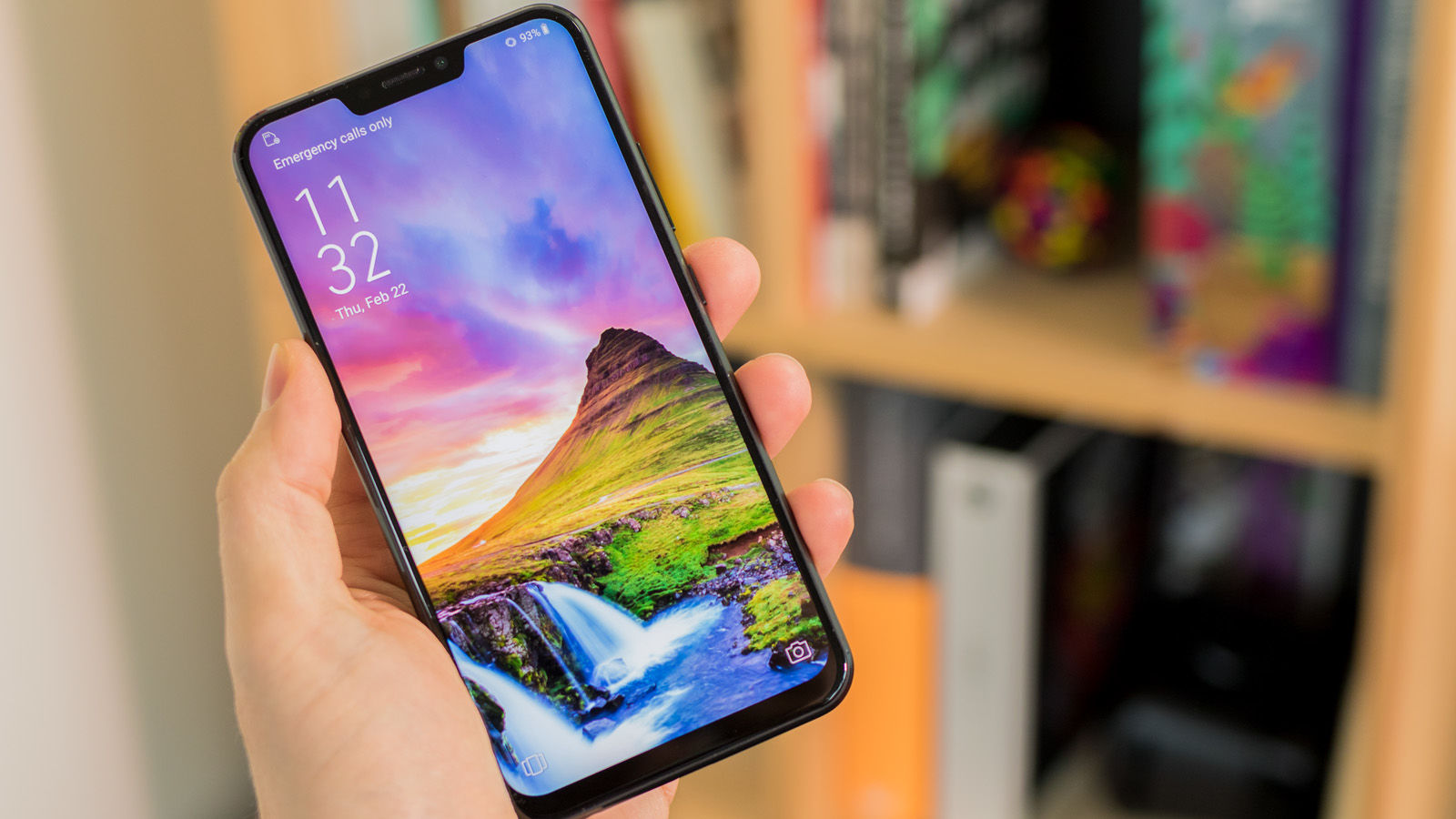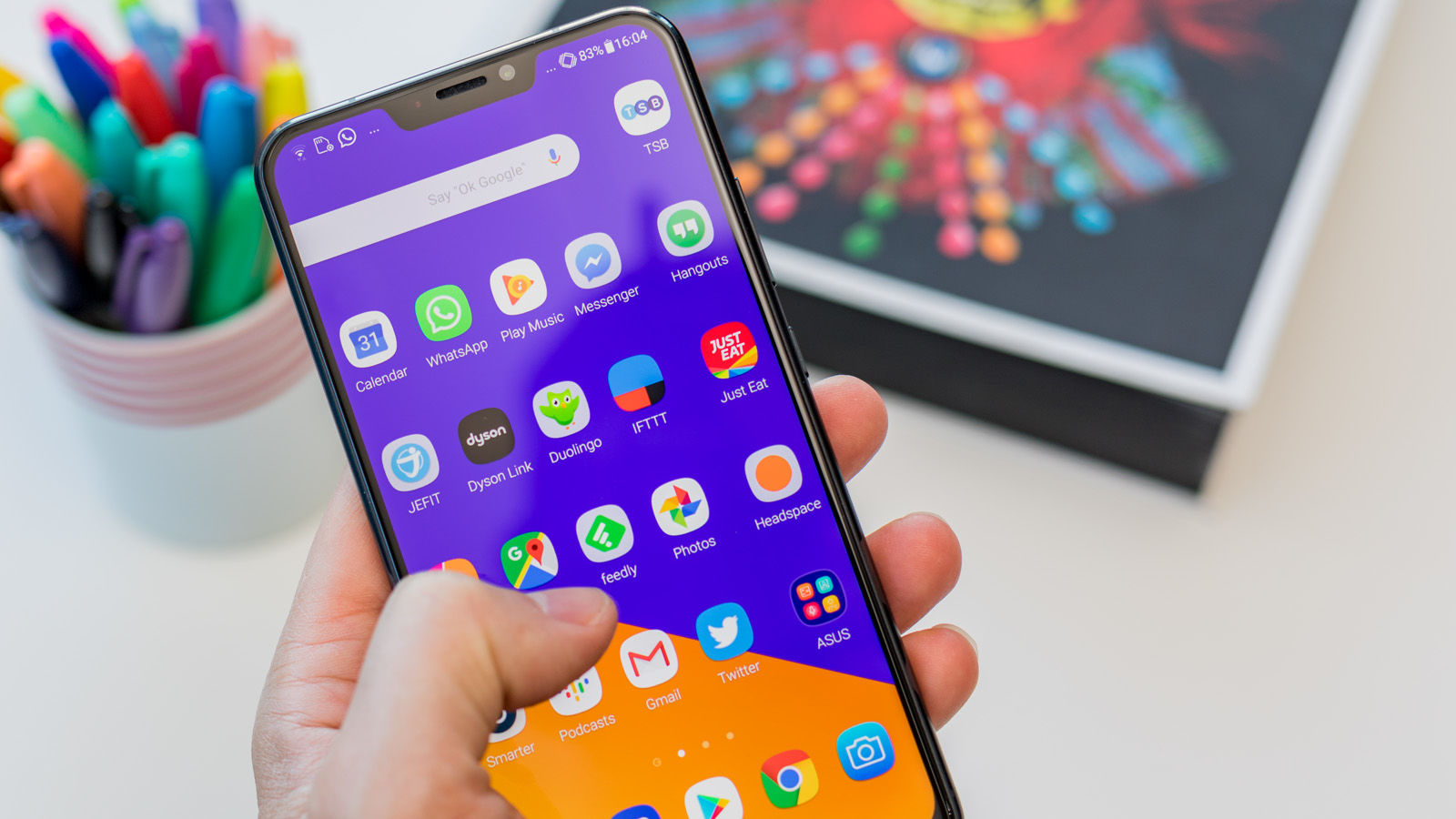Asus first announced the phone at Mobile World Congress 2018, but has unusually decided to wait until July to actually release the phone. We’ve spent some time putting the phone through its paces, and here’s what we think of Asus’s latest attempt to crack the smartphone market.
Asus ZenFone 5: Price and availability
The ZenFone 4 started at £449/$399, and although we expected to see something similar from the new model, Asus has dropped the price significantly. You can order the ZenFone 5 for just £349 from the official UK store with an official release date of 9 July. If you pre-order before 8 July with the code ‘ZF50’ you can get £50 off, making that price even more attractive. The ZenFone 5 will also be available at Carphone Warehouse and John Lewis ‘soon’ after launch, though we don’t have a precise date for that yet. You can also opt to import the phone from GearBest for the tidy sum of £294 – just remember there are customs fees that need to be paid, so the final price might end up pretty similar to what’s on offer in the UK. It’s worth noting that Asus has also announced the ZenFone 5Z and 5 Lite – the 5Z is expected to come to the UK later this year (though it’s already out in Europe), but the 5 Lite probably won’t. The 5 Lite boasts a different design, but the 5Z is essentially identical to the 5, except with a faster processor and extra RAM and storage, so a lot of our thoughts here will apply to that phone too. The only differences we’d expect between the two models would be on benchmarks, performance, and potentially battery life. Things are a little different in the US. There the Lite has been re-branded ZenFone 5Q, priced at $299, and the 5Z is set for a release in August, but the 5 itself may not be coming out at all.
Asus ZenFone 5: Design and build
If you thought the ZenFone 5 sounded familiar, that’s nothing compared to how it looks. No, that isn’t an iPhone X, but you’d be forgiven for making that mistake. Asus was one of the first of the major Android manufacturers to incorporate the notch into its own display design, and even though other notched phones have beaten the ZenFone 5 to market, few have stuck quite so closely to Apple’s original design, right down to the vertically stacked dual cameras in the corner of the phone’s rear. It’s not all the same though. For one, the 6.2in display is larger than the iPhone’s 5.8in screen, though doesn’t quite reach the very bottom of the device. Still, the chin is so minimal you’re not likely to mind too much – it’s hard to complain about a 90 percent screen-to-body ratio, especially since the notch here is actually a bit smaller than Apple’s. Other differences include the fingerprint sensor – here on the back of the phone – along with the welcome inclusion of a 3.5mm headphone jack. Beyond the display you get a very slim metal-framed body, and a glass back, all of which looks and feels great. At just 7.9mm thick, this is comfortable to hold despite the large screen, helped in part by the even-thinner-than-normal 18.7:9 aspect ratio. And with a weight of 155g, it’s light too, despite all that glass and metal. There are concessions to budget of course. Despite the glass rear there’s no wireless charging here, and waterproofing is totally absent too. It would be unreasonable to expect either in a sub-£400 phone though, and they’re still the sort of luxuries that most users can very happily do without. The ZenFone 5 is available in two colours: Midnight Blue and Meteor Silver. This only affects the colour of the back of the body – the sides are black metal either way. Finally, you get a simple clear case included with the phone, along with the charger and a pair of wired in-ear headphones. At the end of the day, the ZenFone 5 looks a hell of a lot like a larger iPhone X. Still, that’s hardly a criticism. The iPhone X is a beautiful phone, and the ZenFone 5 is just as beautiful, for essentially a third of the price. By any stretch, that’s a remarkable achievement.
Asus ZenFone 5: Specs and features
So, for all that the ZenFone 5 looks like Apple’s latest, it’s understandably not packing quite so much power inside, though the phone can still hold its own.
Screen
First up, the 6.2in display is Full HD+, and IPS-style, in an 18.7:9 ratio that’s even thinner than some of its rivals. It’s impressively bright and vivid, with great colour reproduction, helped by the inclusion of a full suite of colour and display options, letting you tweak hue and saturation independently, change the colour temperature, and set up a blue light filter to ease eye strain late at night. Sure, it isn’t OLED, but this is undeniably a great looking display for the price – as long as you’re a fan of the notch. At 6.2 inches it’s also one of the largest notched displays out there – noticeably bigger than either the iPhone X or its closest mid-range rival, the Honor 10. Paired with the notch, it means the display feels absolutely massive, which is yet another reason it’s all too easy to forget how affordable this thing is while you’re using it.
Processor, memory and storage
The ZenFone 5 is one of the first phones to use the Snapdragon 636, Qualcomm’s new mid-range chip designed to offer support for full-screen displays. The 636 is backed up by 4GB of RAM in the UK (though some other markets will get a 6GB option) and 64GB built-in storage, with MicroSD support up to a massive 512GB. In real-life usage, the result is a phone that’s perfectly zippy, with fluid, responsive performance across the board. The benchmarks are arguably less impressive than that though – in line with slightly cheaper phones, and well below the results of the Honor 10, which is only £50 more in the UK. Still, we think you’d have to be a serious power user to ever describe this phone as slow. Performance is strongest in the Geekbench CPU test and JetStream browser test, which correlate the best with the performance you’ll see across most apps, though the ZenFone 5 struggled slightly more in the GFXBench graphics tests – suggesting that big display might have an impact on performance in high-end games.
It’s worth remembering that later in the year the ZenFone 5Z will release, boasting the exact same design but powered by Qualcomm’s flagship chip, the Snapdragon 845, along with more RAM and storage – so if you love the look of the ZenFone 5 but want it to come with a little more oomph, you might want to hold out for the 5Z.
Cameras
As for cameras, you get dual lenses on the back: the main shooter, powered by Sony’s flagship IMX363 sensor, is 12MP with an f/1.8 aperture, paired with an 8MP, f/2.2 wide-angle lens. Asus has opted for wide-angle this time, after previously using a zoom lens, which it claims allows it to take even better portrait mode shots in low light. On the front, you get an 8MP, f/2.0 selfie camera. The camera follows in the footsteps of the Honor View 10, using AI to recognise 16 scenes and objects – from sunsets to dogs – and automatically adjust to the optimum settings on the fly. This does well at spotting objects, with a little icon to let you know what it thinks it’s looking at, but it’s hard to tell how effective the setting adjustments are as there’s seemingly no option to turn the feature off, short of switching the much more complex ‘Pro’ mode inside the camera app. AI aside, camera performance is strong, if not quite best in class. Colours are bright, and especially impressive in lowlight tests, where our photos came out crisp and vibrant despite what was clearly a lot of software work to brighten things up. The camera also does a good job picking out details, in both landscape and macro shots, though the autofocus struggles a little when things get too close.
As for video, you can shoot in Full HD at up to 120 frames per second, or up the resolution to 4K, but with a corresponding frame rate drop down to 30fps. Videos come out pretty well, but anyone with serious video ambitions will have to spend more than this.
Connectivity, audio and biometrics
Audio has been amped up too. The built-in speakers are seriously powerful – among the loudest we’ve ever heard in a smartphone – while maintaining good tone. Elsewhere there’s DTS Headphone:X support for virtual 7.1 surround sound, along with Bluetooth 5.0 and aptX HD. Plus, as we’ve said, you get an actual 3.5mm headphone jack, which is still the only way to get the best audio out of a phone. Beyond audio, the phone uses USB-C for fast charging, and includes NFC for contactless payments through Google Pay. We’ve already mentioned the fingerprint sensor on the rear – as fast and simple to use as you’d expect from a 2018 device – but there’s also the option to unlock the device with facial recognition. With only a single front-facing camera, the tech here certainly isn’t as comprehensive as the iPhone X’s Face ID, and as a result is likely a bit less secure. It’s a little less reliable too – it mostly works fine, but does tend to require you to look at the device pretty much straight-on, and seriously struggles in low light.
Battery life
The ZenFone 5 is packing a 3,300 mAh battery, which has become fairly typical for the price point. It lasted almost exactly seven hours in the GeekBench 4 battery test, with a score of 4036 – roughly in line with the results we saw for the OnePlus 6 and Galaxy S9, which is no bad thing. Real-world usage has been similarly impressive: it’s been reliably lasting for at least a day and a half of typical usage, and can just about manage two days at a push – though it was getting very low on power by that point.
Asus ZenFone 5: Software and apps
Beyond the notched screen, the ZenFone 5 features that Asus has put the most work into pushing are all about the software. Android 8.0 Oreo, is driving everything, with Asus ZenUI 5 on top – and that’s where most of the changes lie. For one, there’s that notch. Android OS and app support for the notch has improved over the last few months, and so for the most part its seamless here. Generally speaking app notifications appear on the left, while system notifications are on the right. Tapping on the notch opens a slightly extended notification area to reveal any that don’t quite fit, while swiping down from the left brings up all your notification cards, and swiping on the right expands the control centre shortcuts. ZenUI as a whole has also been cleaned up, bringing it a bit closer to stock Android: there’s Gboard as the default keyboard; Google’s own browser, email, and messaging apps; and Facebook and Instagram are the only third-party apps that come pre-installed. There are a few of Asus’s own apps, like the clock, contacts, and calculator, but none of these are too objectionable, and you can always install your preferred Google or third-party variants if you have strong feelings about them. With a sense of thudding inevitability, Asus has also created its own take on animated emoji, here dubbed ZeniMoji. You have to access the feature through Asus’s Selfie Master app, but can then share the results across your preferred messaging and social media apps. The results are fun, and Asus wins points for including an anthropomorphic croissant as one of the options, but the animations are less detailed than Apple’s, and there are none of the customisation options included in Samsung’s version, or on their way for iPhone users in iOS 12. The rest of the big software features are, on trend for 2018, all about AI. From the camera to the charger, notifications, and even your ringtone, Asus claims it’s cracked how to use artificial intelligence to improve your experience. We’ve already discussed the camera features, but elsewhere the phone will do its best to alter your ringtone volume to suit ambient noise – cranking it up if you’re in a busy bar, turning it down for a quiet office – tweak the colour temperature of the display based on light levels, and even tweak the text colour on notifications based on your wallpaper image. Then there’s AI Boost – essentially overclocking by another name, letting you crank the processor up for intensive tasks. This will increase battery drain, but Asus claims it will give you power equivalent to a Snapdragon 660 – still mid-range, but definitely more powerful than the 636 normally is. Finally, there’s AI Charging, which will learn from how you charge your phone to help preserve the battery in the long term. For example, if you often keep your phone plugged in overnight, AI Charging will top it up to 80 percent and keep it there until early in the morning, before bringing it all the way to full just before you wake up, which Asus claims could as much as double the battery’s lifespan. These are all the sort of quality of life features that are hard to test, and which most users won’t even notice are quietly improving their experience – though that only makes it all the stranger that most of them are turned off by default, and buried deep in the Android settings menus. You’d only ever discover they were there if go looking for them, and we suspect most users won’t bother, and so will never enjoy the benefits – a shame, as there are some genuine improvements here. Tech Advisor’s Deputy Editor, Dom covers everything that runs on electricity, from phones and laptops to wearables, audio, gaming, smart home, and streaming - plus he’s a regular fixture on the Tech Advisor YouTube channel.







